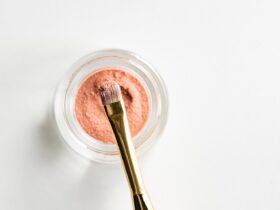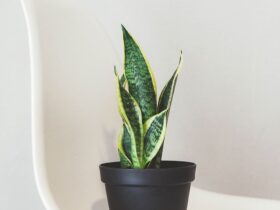The Rise of Ultrasonic Atomization in Perfumery
For centuries, the application of fragrance has relied on traditional methods: direct application, spray bottles employing mechanical pumps, and even simple splash bottles. While these methods remain commonplace, a new wave of technology is revolutionizing how we experience scent – the ultrasonic perfume atomizer. This innovation leverages the power of ultrasonic vibrations to create a fine mist of perfume, offering several advantages over conventional techniques.

(Image of a modern Ultrasonic Perfume Atomizer. Replace with actual image.)
Understanding Ultrasonic Atomization
Ultrasonic atomization is a process that utilizes high-frequency sound waves to break a liquid into tiny droplets. In the context of perfume atomizers, a piezoelectric transducer, typically a small ceramic disc, is vibrated at an ultrasonic frequency, often in the range of 1 to 3 MHz. This vibration is transmitted to the perfume liquid, creating capillary waves on the surface. When the amplitude of these waves reaches a critical point, they break apart, forming a fine mist of perfume droplets. This mist is then propelled into the air via a small fan or natural diffusion.
Advantages Over Traditional Methods
Ultrasonic perfume atomizers offer a plethora of benefits compared to traditional perfume delivery systems:
- Finer Mist: The ultrasonic process creates a significantly finer mist than traditional spray pumps. This results in a more even distribution of the fragrance on the skin and in the air, enhancing the overall sensory experience.
- Improved Scent Longevity: Because the droplets are smaller, they tend to linger in the air for a longer duration, extending the perceived longevity of the fragrance.
- Reduced Alcohol Evaporation: Traditional spray bottles often eject a mixture of perfume oils and alcohol. The alcohol evaporates quickly, sometimes leading to a harsh initial blast of scent. Ultrasonic atomizers, by creating a finer mist, potentially reduce the rapid evaporation of alcohol, leading to a smoother and more nuanced scent profile.
- Portability and Convenience: Many ultrasonic atomizers are designed to be compact and portable, making them ideal for travel or on-the-go fragrance application. They often utilize rechargeable batteries, eliminating the need for cumbersome cords.
- Control and Precision: Some advanced models offer adjustable mist intensity settings, allowing users to precisely control the amount of fragrance released. This helps prevent over-application and allows for a customized scent experience.
- Aesthetics and Design: Ultrasonic atomizers often boast sleek and modern designs, making them aesthetically pleasing additions to any vanity or travel kit.
- Reduced Waste: While this is not always the case, some ultrasonic atomizers are designed to be refillable, reducing reliance on disposable perfume bottles and minimizing environmental impact.
Applications Beyond Personal Use
While primarily designed for personal fragrance application, the applications of ultrasonic atomization extend beyond individual use:
- Aromatherapy Diffusers: Ultrasonic technology is widely used in aromatherapy diffusers, where essential oils are dispersed into the air for therapeutic benefits.
- Retail Environments: Retailers can use ultrasonic atomizers to subtly scent their stores, creating a more inviting and memorable shopping experience.
- Event Spaces: Event organizers can use ultrasonic atomizers to create a specific ambiance through scent, enhancing the overall atmosphere of the event.
- Healthcare Settings: Certain essential oils dispensed through ultrasonic atomizers can be used to promote relaxation and reduce anxiety in healthcare settings. (Consult with healthcare professionals before implementing.)
Challenges and Considerations
Despite their numerous advantages, ultrasonic perfume atomizers also present some challenges and considerations:
- Cost: Ultrasonic atomizers tend to be more expensive than traditional spray bottles, although the price gap is narrowing as technology advances.
- Maintenance: Regular cleaning is essential to prevent clogging and ensure optimal performance. Mineral buildup from hard water can interfere with the ultrasonic vibrations.
- Fragrance Compatibility: Certain fragrances, particularly those containing high concentrations of viscous oils or resins, may not atomize as effectively as others.
- Noise: Although generally quiet, some ultrasonic atomizers may produce a faint high-pitched sound that some individuals may find distracting.
- Power Source: While many are rechargeable, some require a constant power source, limiting portability.
The Future of Ultrasonic Perfume Atomization
The future of ultrasonic perfume atomization is bright, with ongoing advancements promising even greater performance and functionality. We can anticipate:
- Improved Battery Life: Developments in battery technology will lead to longer-lasting portable atomizers.
- Enhanced Atomization Technology: Refinements in transducer design and frequency control will result in even finer and more consistent mists.
- Smart Features: Integration with smartphone apps could allow users to control mist intensity, schedule fragrance releases, and even track perfume usage.
- Sustainable Materials: Manufacturers will increasingly utilize eco-friendly and sustainable materials in the construction of ultrasonic atomizers.
- Wider Adoption: As the technology becomes more affordable and accessible, we can expect to see wider adoption of ultrasonic atomizers across various industries and applications.
Conclusion
Ultrasonic perfume atomizers represent a significant advancement in fragrance delivery, offering a superior sensory experience through finer mist, improved scent longevity, and enhanced control. While challenges remain, ongoing technological advancements are poised to address these concerns and unlock the full potential of this innovative technology. As the demand for personalized and convenient fragrance solutions continues to grow, ultrasonic atomizers are set to play an increasingly prominent role in the world of perfumery and beyond.
FAQs
















Leave a Reply